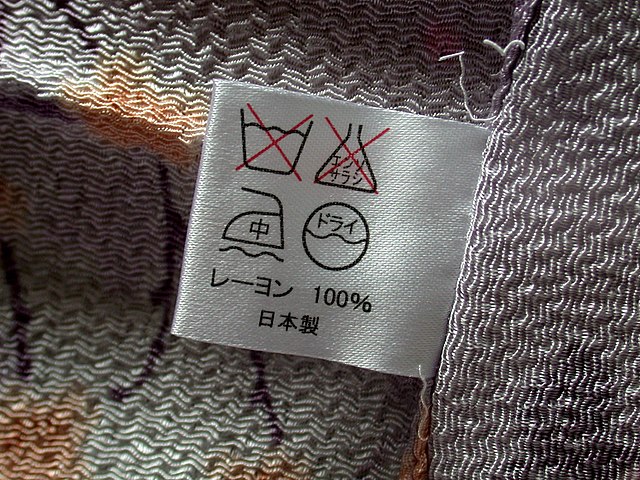A laundry symbol, also called a care symbol, is a pictogram indicating the manufacturer's suggestions as to methods of washing, drying, dry-cleaning and ironing clothing. Such symbols are written on labels, known as care labels or care tags, attached to clothing to indicate how a particular item should best be cleaned. While there are internationally recognized standards for the care labels and pictograms, their exact use and form differ by region. In some standards, pictograms coexist with or are complemented by written instructions.
Laundry care symbols with instructions in Japanese. The four symbols shown indicate that the garment must not be washed in water, must not be bleached, may be ironed only with a protective pressing cloth, and must be dry cleaned.
A poster from a laundromat in Beckley, West Virginia, that lists many of the common laundering instruction icons found on garment tags
A pictogram is a graphical symbol that conveys meaning through its visual resemblance to a physical object. Pictograms are used in systems of writing and visual communication. A pictography is a writing system which uses pictograms. Some pictograms, such as hazard pictograms, may be elements of formal languages.
A pictographic traffic sign (top) warning motorists of horses and riders
Ojibwa pictographs on cliff-face at Agawa Rock, Lake Superior Provincial Park of a boat and Mishipeshu, an animal with horns, painted with red ochre
Several prehistoric engravings can be found around La Silla Observatory.
Native American pictographs from the Great Gallery, Horseshoe Canyon, Canyonlands National Park






